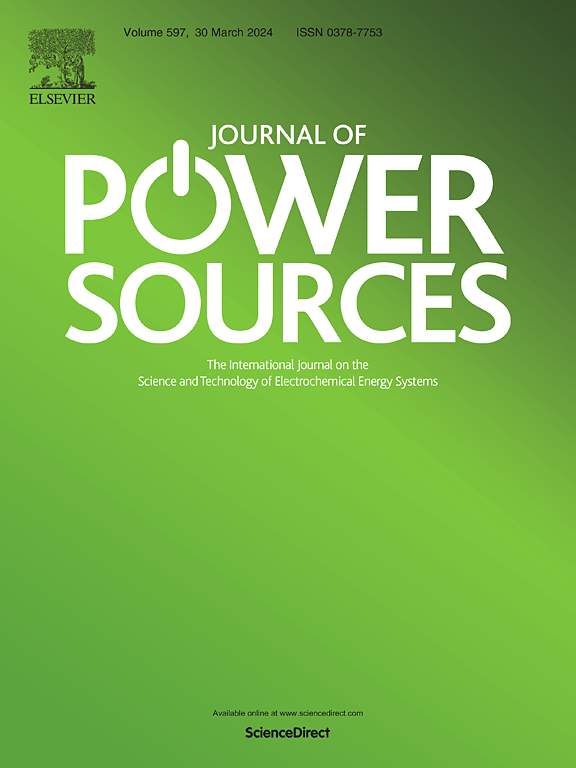Green syngas production with metal-supported solid oxide cells
IF 8.1
2区 工程技术
Q1 CHEMISTRY, PHYSICAL
引用次数: 0
Abstract
The Solid Oxide Electrolyser (SOE) technology may play an essential role in converting H2O and CO2 into green syngas, essential to developing carbon-neutral fuels. Metal-Supported Cells (MSCs) have generated large interest thanks to their cost-effective materials and superior mechanical properties. MSCs with fuel electrodes based on porous Ni-free electrode backbones infiltrated with Ni/GDC (Gadolinium Doped Ceria) electro-catalysts have been developed at DTU Energy. These types of MSC showed excellent behaviour in steam electrolysis mode. The reduced nickel content, together with the infiltrated GDC, is a promising argument that these kinds of fuel electrodes are less prone to carbon-related reactions (such as methanation and carbon deposition) compared to the conventional Ni/YSZ fuel electrode supported cells, making them suitable as a robust cathode in co-electrolysis for syngas production. This study evaluates for the first time the operation of MSCs in co-electrolysis mode, specifically the initial performances and the durability of two types of metal-supported cells at 650 °C, while comparing them to a commercial state-of-the-art ceramic cell with Ni/YSZ fuel electrode. The tests showed promising results, with the MSCs exhibiting similar or lower degradation if compared to the commercial cell.
金属支撑固体氧化物电池的绿色合成气生产
固体氧化物电解器(SOE)技术可能在将H2O和CO2转化为绿色合成气方面发挥重要作用,这对开发碳中性燃料至关重要。金属支撑细胞(MSCs)由于其具有成本效益的材料和优异的机械性能而引起了人们的极大兴趣。DTU能源公司开发了基于Ni/GDC(钆掺杂铈)电催化剂浸润多孔无Ni电极骨架的燃料电极间充质干细胞。这些类型的MSC在蒸汽电解模式下表现出优异的性能。与传统的Ni/YSZ燃料电极支持的电池相比,降低的镍含量以及渗透的GDC是一个有希望的论据,表明这些类型的燃料电极不太容易发生与碳相关的反应(如甲烷化和碳沉积),使它们适合作为共电解合成气生产的稳健阴极。本研究首次评估了MSCs在共电解模式下的运行情况,特别是两种金属支撑电池在650°C下的初始性能和耐久性,同时将它们与具有Ni/YSZ燃料电极的商用最先进陶瓷电池进行了比较。测试显示了令人鼓舞的结果,与商业细胞相比,MSCs表现出相似或更低的降解。
本文章由计算机程序翻译,如有差异,请以英文原文为准。
求助全文
约1分钟内获得全文
求助全文
来源期刊

Journal of Power Sources
工程技术-电化学
CiteScore
16.40
自引率
6.50%
发文量
1249
审稿时长
36 days
期刊介绍:
The Journal of Power Sources is a publication catering to researchers and technologists interested in various aspects of the science, technology, and applications of electrochemical power sources. It covers original research and reviews on primary and secondary batteries, fuel cells, supercapacitors, and photo-electrochemical cells.
Topics considered include the research, development and applications of nanomaterials and novel componentry for these devices. Examples of applications of these electrochemical power sources include:
• Portable electronics
• Electric and Hybrid Electric Vehicles
• Uninterruptible Power Supply (UPS) systems
• Storage of renewable energy
• Satellites and deep space probes
• Boats and ships, drones and aircrafts
• Wearable energy storage systems
 求助内容:
求助内容: 应助结果提醒方式:
应助结果提醒方式:


